- Home
- James Rollins
Map of Bones sf-2 Page 9
Map of Bones sf-2 Read online
Page 9
The Meridian Room.
Jacob craned at the frescoes adorning the circular walls and ceilings, depicting scenes from the Bible with cherubs and clouds above. A single spear of light, admitted through a quarter-sized hole in the wall, pierced the dusty air and spiked down atop the room’s marble slab floor, which was carved with the signs of the zodiac. A line marking the meridian cut across the floor. The room was the sixteenth-century solar observatory used to establish the Gregorian calendar and where Galileo had attempted to prove his case that the Earth revolved around the sun.
Unfortunately he had failed — certainly a low point between the Catholic Church and the scientific community. Ever since, the Church had been trying to make up for its shortsightedness.
Vigor took a moment to slow his breathing after the long climb. He wiped sweat from his brow and directed Jacob to a neighboring chamber off the Meridian Room. A massive bookshelf covered its back wall, crammed with books and bound regestra.
“According to the master index, the book we seek should be on the third shelf.”
Jacob stepped through, tripping the wire that ran across the threshold.
Vigor heard the twang. No time for warning.
The incendiary device exploded, blowing Jacob’s body out the doorway and into Vigor.
They fell backward as a wall of flames roared outward, rolling over them, like the brimstone breath of a dragon.
4
DUST TO DUST
JULY 24, 12:14 P.M.
WASHINGTON, D.C.
THE MISSION had been assigned crimson priority, black assignation, and silver security protocols. Director Painter Crowe shook his head at the color-coding. Some bureaucrat had visited a Sherwin-Williams store one too many times.
All the designations boiled down to one bottom line: Do not fail. When matters of national security were involved, there was no second place, no silver medal, no runner-up.
Painter sat at his desk and reviewed his ops manager’s report. All seemed in order. Credentials established, safe-house codes updated, equipment checks completed, satellite schedules coordinated, and a thousand other details arranged. Painter ran a finger down the projected cost analysis. He had a budget meeting next week with the Joint Chiefs.
He rubbed his eyes. This had become his life: paperwork, spreadsheets, and stress. It had been a grueling day. First the Guild ambush, now an international operation to launch. Still, a part of him thrilled at the new challenges and responsibilities. He had inherited Sigma from its founder, Sean McKnight, now director of all of DARPA. Painter refused to disappoint his mentor. All morning, the two had discussed the ambush at Fort Detrick and the upcoming mission, strategizing like old times. Sean had been surprised by Painter’s choice of team leader, but it was ultimately his decision.
So the mission was a go.
All that was left was to brief the operatives. Flight time was set for 0200. There was not much time. A private jet was already being fueled and loaded at Dulles, courtesy of Kensington Oil, a perfect cover. Painter had arranged this last himself, calling on a favor from Lady Kara Kensington. She had been amused to be helping Sigma again. “Can’t you Americans do anything by yourselves?” she had chided him.
The intercom buzzed on his desk.
He hit the button. “Go ahead.”
“Director Crowe, I have Drs. Kokkalis and Bryant here.”
“Send them in.”
A chime sounded at the door as the lock released. Monk Kokkalis pushed in first, but he held the door for Kathryn Bryant. The woman stood a head taller than the stocky former Green Beret. She moved with a leonine grace of constrained power. Her auburn hair, straight to the shoulder, was braided and as conservative as her attire: navy blue suit, white blouse, leather pumps. Her only flash of color was a jeweled pin on her lapel, a tiny frog. Gold enameled in emerald. A match to the flash of her green eyes.
Painter knew why she wore the golden pin. The frog had been a gift from an amphibious team she had once joined during a marine recon operation for naval intelligence. She had saved two men, proving her prowess with a dagger. But one teammate never came back. She wore the pin in his memory. Painter believed there was more to the story, but her files did not elaborate further.
“Please take a seat,” Painter said, acknowledging them both with a nod. “Where’s Commander Pierce?”
Monk shifted in his seat. “Gray…Commander Pierce had a family emergency. He just arrived back. He’ll be up in a moment.”
Covering for him, Painter thought. Good. It was one of the reasons he had chosen Monk Kokkalis for this mission, pairing him up with Grayson Pierce. They complemented each other’s skills — but more importantly, they suited each other’s personalities. Monk could be a tad staid, by-the-book, while Grayson was more reactionary. Still, Grayson listened to Monk, more so than any other member of Sigma. He tempered the steel in Gray. Monk had a way of joking and humoring that proved as convincing as any well-debated argument. They made a good pair.
On the other hand…
Painter noted how stiffly Kat Bryant sat, still at attention. She was not nervous, more wary with an edge of excitement. She exuded confidence. Maybe too much. He had decided to include her on this mission due to her intelligence background, more than her current study of engineering. She was experienced with protocols in the EU, especially around the Mediterranean. She knew microelectronic surveillance and counterintelligence. But more importantly, she had dealings with one of the Vatican operatives who would be jointly overseeing this investigation, Monsignor Verona. The two had worked together on an international art theft ring.
“We might as well get the paperwork out of the way while we await Commander Pierce.” Painter passed out two thick dossiers in black file jackets, one each to Bryant and Kokkalis. A third waited for Pierce.
Monk glanced at the silver? emblazoned on the folder.
“That’ll fill in all the finer details for this op.” Painter tapped the touch screen built into his desktop. The three Sony flat-panel screens — one behind his shoulder, one to the left, and one to the right — changed from panoramic views of mountain landscapes rendered in high definition to the same silver?. “I’ll be doing the mission briefing myself, rather than the usual ops manager.”
“Compartmentalizing the intel,” Kat said softly, her Southern accent softening the edges of her consonants. Painter knew she could make all trace of her accent disappear when she needed too. “Due to the ambush.”
Painter nodded. “Information is being restricted in advance of a system-wide check of our security protocols.”
“Yet we’re still going ahead with a new mission?” Monk asked.
“We have no choice. Word from—”
The buzz of the intercom interrupted. Painter hit the button.
“Director Crowe,” his secretary announced, “Dr. Pierce has arrived.”
“Send him in.”
The door chimed open, and Grayson Pierce strode inside. He wore black Levi’s dressed up with black leather shoes and a starched white shirt. His hair was slicked down, still wet from a shower.
“Sorry,” Grayson said, stopping between the two other agents. A certain hardness in his eyes belied any real sorrow. He kept a stiff posture, ready for reprimand.
And he deserved it. After the security breach, now was not the time to be thumbing his nose at command. However, a certain modicum of insubordination had always been tolerated at Sigma command. These men and women were the best of the best. You couldn’t ask them to act independently out in the field, then expect them to bend to totalitarian authority here. It required a deft hand to balance the two.
Painter stared at Grayson. With the increased security, Painter was well aware the man had received an urgent call from his mother and had checked out of the command center. Behind the stolid stare of the other, Painter noted a glassy-eyed fatigue. Was it from the ambush or his home situation? Was he even fit for this new assignment?
Grayson did not break eye
contact. He simply waited.
The meeting had a purpose beyond just a briefing. It was also a test.
Painter waved to a seat. “Family is important,” he said, releasing the man. “Just don’t let your tardiness become a habit.”
“No, sir.” Grayson crossed and sat, but his eyes flicked from the emblazoned flat-screen monitors to the dossiers on his fellow agents’ laps. A crease formed between his brows. The lack of reprimand had unsettled him. Good.
Painter slid the third folder toward Grayson. “We were just starting the mission briefing.”
He took the folder. A look of wary bewilderment narrowed his eyes, but he kept silent.
Painter leaned back and tapped the screen on his desk. A Gothic cathedral appeared on the left screen, an exterior shot. An interior view appeared on the right. Bodies lay sprawled everywhere. Behind his shoulder, he knew a picture of a chalked outline marked off an altar, still bloodstained, outlining the sprawl of a murdered priest. Father Georg Breitman.
Painter watched the agents’ gazes travel over the images.
“The massacre in Cologne,” Kat Bryant said.
Painter nodded. “It occurred near the end of a midnight mass celebrating the feast day of the biblical Wise Men. Eighty-five people were killed. The motive appears to be simple robbery. The cathedral’s priceless reliquary was broken into.” Painter flicked through additional images of the golden sarcophagus and the shattered remains of its security cage. “The only items stolen were the shrine’s contents. The supposed bones of the biblical Magi.”
“Bones?” Monk asked. “They leave behind a crate of solid gold and take a bunch of bones? Who would do that?”
“That remains unknown. There was only one survivor of the massacre.” Painter brought up an image of a young man being carried out in a stretcher, another of the same man in a hospital bed, eyes open but glazed with shock. “Jason Pendleton. American. Age twenty-one. He was found hiding in a confessional booth. He was barely coherent when first discovered, but after a regimen of sedatives, he was able to give a tentative report. The party involved were robed and cloaked as monks. No faces were ID’d. They stormed the cathedral. Armed with rifles. Several people were shot, including the priest and archbishop.”
More pictures flashed across the screens: bullet wounds, more chalked outlines, a web of red yarns marking the trajectory of shots. It looked like a typical crime scene, just with an unusual backdrop.
“And how does this involve Sigma?” Kat asked.
“There were other deaths. Inexplicable deaths. To break into the security vault, the assailants employed some device that not only shattered the metal and bulletproof cage, but also, at least according to the survivor, triggered a wave of death across the cathedral.”
Painter reached out and hit a key. Across all three screens, views of various corpses appeared. The agents’ expressions remained passive. They had all seen their share of death. The bodies were contorted, heads thrown back. One image was a close-up of one of the faces. Eyes were open, corneas gone opaque, while black trails of bloody tears leached from the corners. Lips were stretched back, frozen in a rictus of agony, teeth bared, gums bleeding. The tongue was swollen, cracked, blackened at the edges.
Monk, with his medical and forensic training, shifted straighter, eyes pinched. He might play the absentminded clown, but he was a keen observer, his strongest suit.
“Full autopsy reports are in your folders,” Painter said. “The initial conclusion from the coroners is that the deaths were due to some manifestation of an epileptiform seizure. An extreme convulsive event coupled with severe hyperthermia, spiking core temperature and resulting in the complete liquefaction of the outer surfaces of the brain. All died with their hearts in a contracted state, so intensely squeezed that no blood could be found in the chambers. One man’s pacemaker had exploded in his chest. A woman with a metal pin in a femur was found with her leg still on fire, hours later, smoldering from the inside out.”
The agents kept their faces stoic, but Monk narrowed one eye and Kat’s complexion seemed to have blanched to a pale white. Even Grayson stared a bit too fixedly at the images, unblinking.
But Gray was the first to speak. “And we’re sure the deaths are connected to the device employed by the thieves.”
“As sure as we can be. The survivor reported feeling an intense pressure in his head as the device was turned on. He described it like descending in an airplane. Felt in the ears. The deaths occurred at this time.”
“But Jason lived,” Kat said, taking a deep breath.
“Some others did, too. But the unaffected were subsequently shot by the perpetrators. Slaughtered in cold blood.”
Monk stirred. “So some people succumbed, others did not. Why? Was there any commonality between the victims of the seizures?”
“Only one. A fact even noted by Jason Pendleton. The only ones to suffer the seizures appear to be those who had partaken of the Communion service.”
Monk blinked.
“It is for this reason that the Vatican made contact with U.S. authorities. And the chain of command dropped this into our laps.”
“The Vatican,” Kat said.
Painter read the understanding in her eyes. She now understood why she had been handpicked for this mission, interrupting her doctoral program in engineering.
Painter continued, “The Vatican fears repercussions if it becomes widely known that some group may be targeting the Communion service. Possibly poisoning its wafers. They want answers as soon as possible, even if it means bending international law. Your team will be working with two intelligence agents in association with the Holy See. They’ll be targeting why all this death seemed aimed to cover the theft of the bones of the Magi. Was it purely a symbolic gesture? Or was there more to the theft?”
“And our end goal?” Kat asked.
“To find out who perpetrated the crime and what device they employed. If it could kill in such a specific and targeted manner, we need to know what we’re dealing with and who controls it.”
Grayson had remained quiet, staring at the gruesome images with more of a clinical stare. “Binary poison,” he finally mumbled.
Painter glanced to the man. Their eyes matched, mirroring each other, both a stormy blue.
“What was that?” Monk asked.
“The deaths,” Grayson said, turning to him. “They were not triggered by a single event. The cause had to be twofold, requiring an intrinsic and extrinsic factor. The device — the extrinsic factor — triggered the mass seizure. But only those who had participated in the Communion service responded. So there must be an intrinsic factor as yet unknown.”
Grayson turned back to Painter. “Was any wine passed out during the service?”
“Only to a handful of the parishioners. But they also consumed the Communion bread.” Painter waited, watching the strange gears shift in the man’s head, seeing him come to a conclusion that had taken experts even longer to reach. There was a reason beyond brawn and reflex for why Grayson had caught Painter’s eye.
“The Communion bread must have been poisoned,” Grayson said. “There is no other explanation. Something was intrinsically seeded into the victims through the consumption of the hosts. Once contaminated, they were susceptible to whatever force was generated by the device.” Grayson’s eyes met Painter’s again. “Were the host wafers examined for any contamination?”
“There was not enough left in the victims’ stomach contents to analyze properly, but there were wafers left over from the service. They were sent to labs throughout the EU.”
“And?”
By now, the glassy fatigue had vanished from the man’s eyes, replaced by a laser-focused attention. He was plainly still competent for duty. But the test was not over.
“Nothing was found,” Painter continued. “All analyses showed nothing but wheat flour, water, and the usual bakery ingredients for making unleavened bread wafers.”
The crease deepened between Grayson�
�s brows. “That’s impossible.”
Painter heard the stubborn edge to his voice, almost belligerent. The man remained firmly confident in his assessment.
“There must be something,” Grayson pressed.
“Labs at DARPA were also consulted. Their results were the same.”
“They were wrong.”
Monk reached out a restraining arm.
Kat crossed her arms, settled on the matter. “Then there must be another explanation for—”
“Bullshit,” Grayson said, cutting her off. “The labs were all wrong.”
Painter restrained a smile. Here was the leader waiting to come out in the man: sharp of mind, doggedly confident, willing to listen but not easily swayed once his mind was set.
“You’re right,” Painter finally said.
While Monk’s and Kat’s eyes widened in surprise, Grayson merely leaned back in his seat.
“Our labs here did find something.”
“What?”
“They carbonized the sample down to its component parts and separated out all the organic components. They then removed each trace element as the mass spectrometer measured it. But after everything was stripped away, they still had a quarter of the dry weight of the host remaining on their scales. A dry whitish powder.”
“I don’t understand,” Monk said.
Grayson explained. “The remaining powder couldn’t be detected by the analyzing equipment.”
“It was sitting on the scales, but the machines were telling the technicians nothing was there.”
“That’s impossible,” Monk said. “We have the best equipment in the world here.”
“But still they couldn’t detect it.”
“The powdery substance must be totally inert,” Grayson said.
Painter nodded. “So the lab boys here tested it further. They heated it to its melting point, 1,160 degrees. It melted and formed a clear liquid that, when the temperature dropped, hardened to form a clear amber glass. If you ground the glass in a mortar and pestle, it again formed the white powder. But in every stage it remained inert, undetectable by modern equipment.”

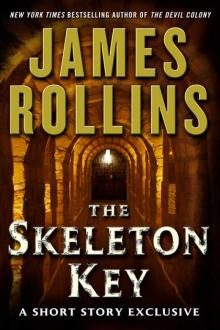 The Skeleton Key
The Skeleton Key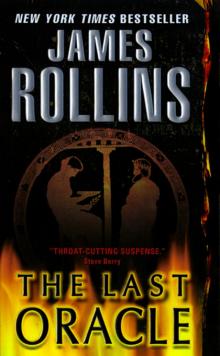 The Last Oracle
The Last Oracle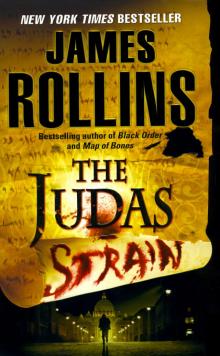 The Judas Strain
The Judas Strain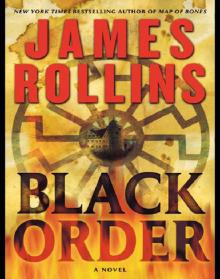 Black Order
Black Order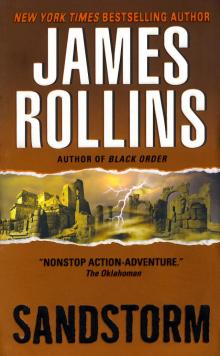 Sandstorm
Sandstorm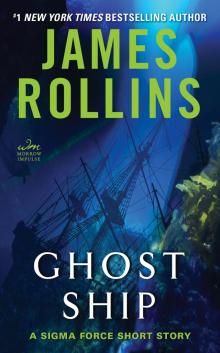 Ghost Ship
Ghost Ship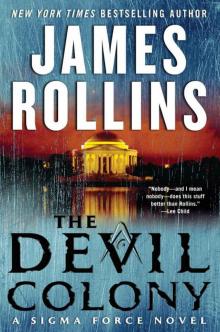 The Devil Colony
The Devil Colony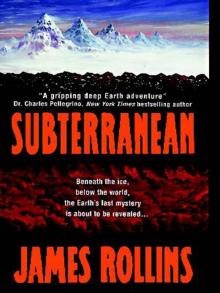 Subterranean
Subterranean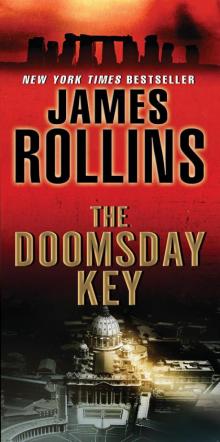 The Doomsday Key
The Doomsday Key The 6th Extinction
The 6th Extinction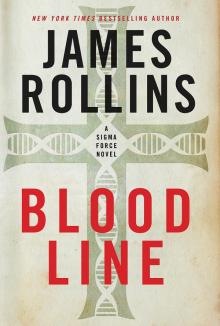 Bloodline
Bloodline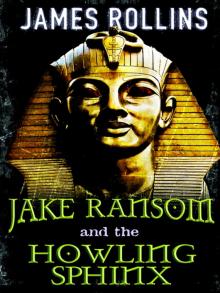 Jake Ransom and the Howling Sphinx
Jake Ransom and the Howling Sphinx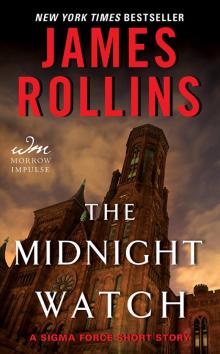 The Midnight Watch
The Midnight Watch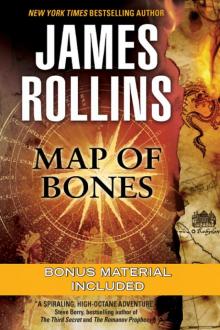 Map of Bones
Map of Bones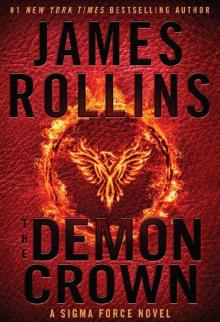 The Demon Crown
The Demon Crown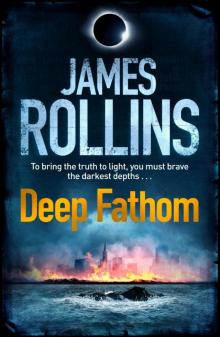 Deep Fathom
Deep Fathom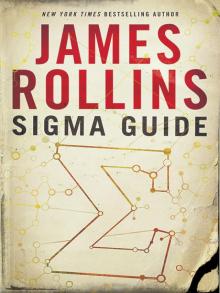 Sigma Guide
Sigma Guide Kowalski's in Love
Kowalski's in Love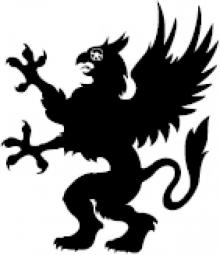 Jake Ransom and the Skull King's Shadow
Jake Ransom and the Skull King's Shadow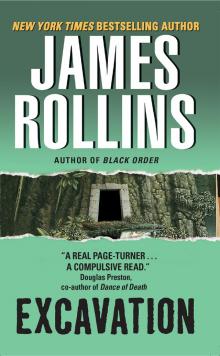 Excavation
Excavation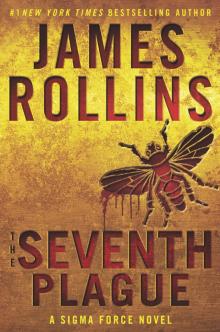 The Seventh Plague
The Seventh Plague Altar of Eden
Altar of Eden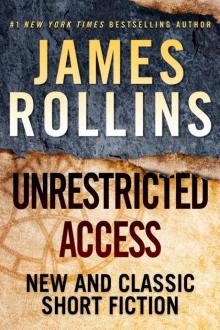 Unrestricted Access: New and Classic Short Fiction
Unrestricted Access: New and Classic Short Fiction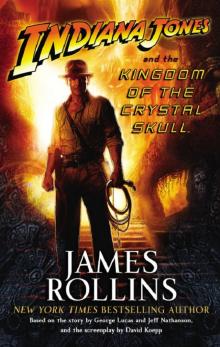 Indiana Jones and the Kingdom of the Crystal Skull
Indiana Jones and the Kingdom of the Crystal Skull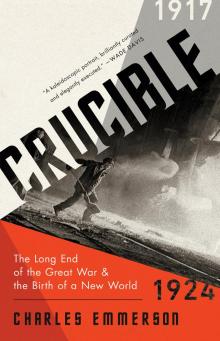 Crucible
Crucible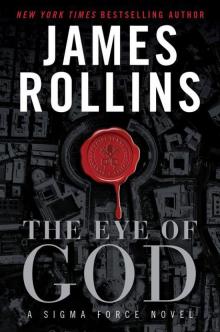 The Eye of God
The Eye of God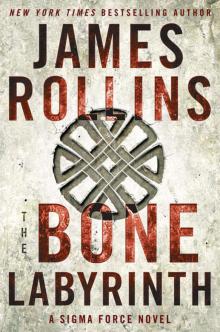 The Bone Labyrinth
The Bone Labyrinth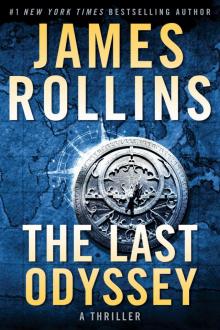 The Last Odyssey: A Thriller
The Last Odyssey: A Thriller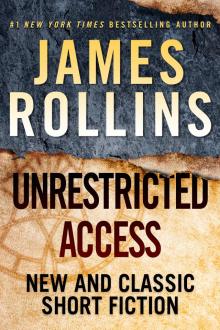 Unrestricted Access
Unrestricted Access Amazonia
Amazonia Blood Brothers: A Short Story Exclusive
Blood Brothers: A Short Story Exclusive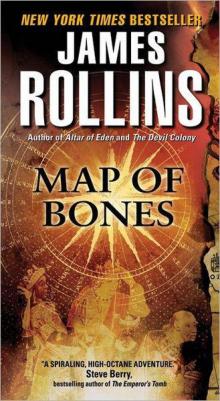 Map of Bones: A Sigma Force Novel
Map of Bones: A Sigma Force Novel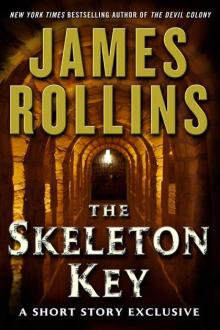 The Skeleton Key (sigma force)
The Skeleton Key (sigma force)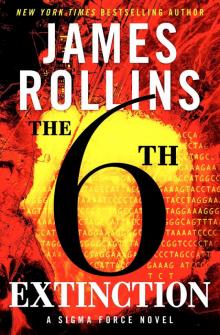 Sigma Force 10 - The Sixth Extinction
Sigma Force 10 - The Sixth Extinction Innocent Blood
Innocent Blood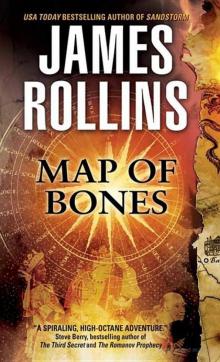 Map of Bones sf-2
Map of Bones sf-2 The Eye of God: A Sigma Force Novel
The Eye of God: A Sigma Force Novel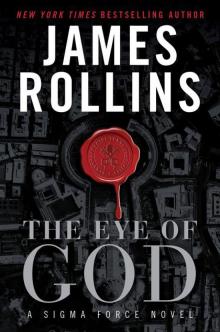 The Eye of God: A Sigma Force Novel sf-9
The Eye of God: A Sigma Force Novel sf-9 The Pit
The Pit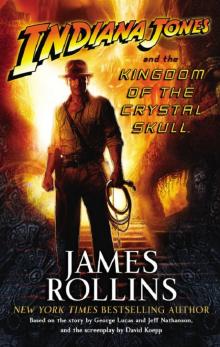 Indiana Jones and the The Kingdom Of The Crystal Skull
Indiana Jones and the The Kingdom Of The Crystal Skull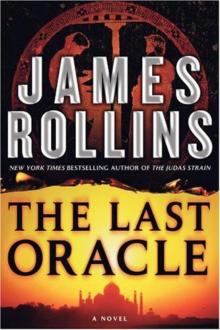 The Last Oracle (2008) sf-5
The Last Oracle (2008) sf-5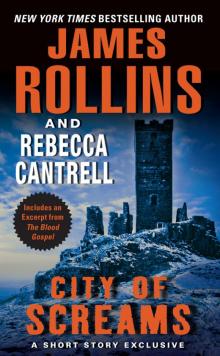 City of Screams
City of Screams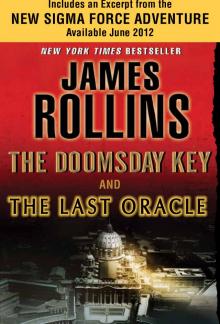 The Doomsday Key and The Last Oracle with Bonus Excerpts
The Doomsday Key and The Last Oracle with Bonus Excerpts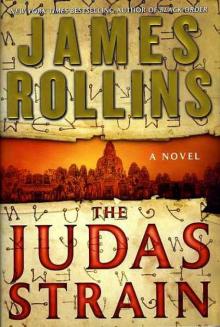 The Judas Strain sf-4
The Judas Strain sf-4 Blood Infernal
Blood Infernal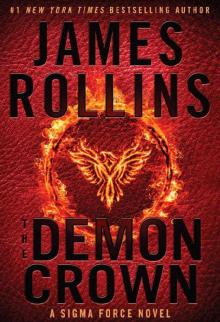 The Demon Crown: A Sigma Force Novel
The Demon Crown: A Sigma Force Novel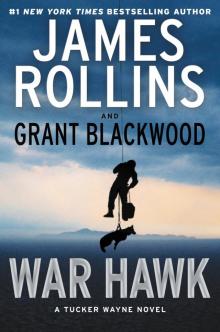 War Hawk: A Tucker Wayne Novel
War Hawk: A Tucker Wayne Novel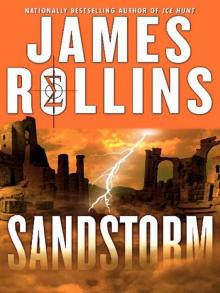 SANDSTORM sf-1
SANDSTORM sf-1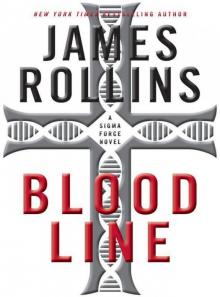 Bloodline: A Sigma Force Novel
Bloodline: A Sigma Force Novel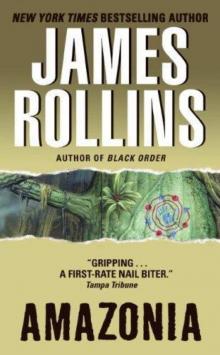 Amazonia: a novel
Amazonia: a novel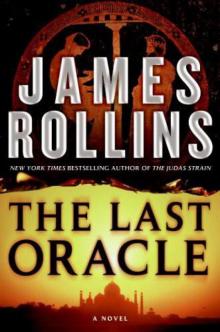 The Last Oracle: A Sigma Force Novel
The Last Oracle: A Sigma Force Novel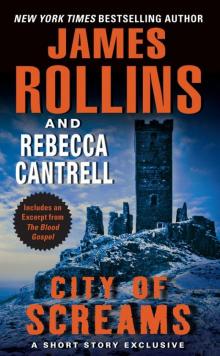 City of Screams (the order of the sanguines)
City of Screams (the order of the sanguines)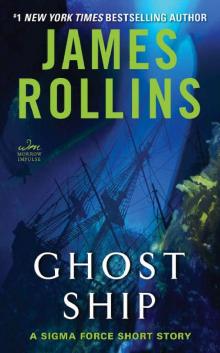 Ghost Ship: A Sigma Force Short Story
Ghost Ship: A Sigma Force Short Story The Doomsday Key: A Sigma Force Novel
The Doomsday Key: A Sigma Force Novel